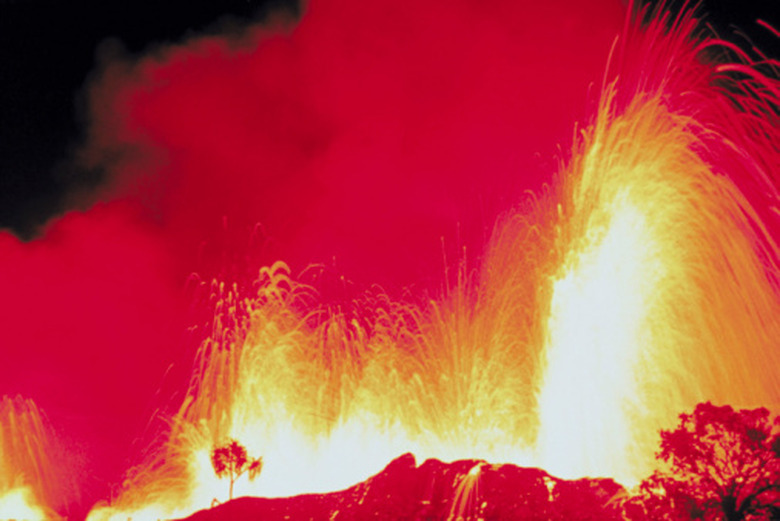What Are The Types Of Volcanic Explosions?
If you think that any volcanic eruption is just like another, think again. As different types of volcanoes exist, so do different types of eruptions and their levels of impact. Volcanologists categorize volcanic eruptions into two types: explosive and effusive. However, classification of the types of volcanic explosions is not consistent throughout the field.
Strombolian Eruption
Strombolian Eruption
Strombolian eruptions occur when gas bubbles cause lava to burst and explode through the volcanic vent. During this type of eruption, lava explosions occur every few minutes for a series of intervals. These bursts of lava reach hundreds of meters in height, making their shooting capacity far and wide.
Vulcanian Eruption
Vulcanian Eruption
Vulcanian eruptions are small, violent explosions of magma. The force behind the explosions are so powerful, material blasted from the volcano can travel at speeds of 800 mph. The magma can also rise several kilometers high once it leaves the volcano. Such explosions may last for days, months or years with random bursts.
Surtseyan Eruption
Surtseyan Eruption
A Surtseyan eruption combines lava or magma with water to create a hydromagmatic explosion. Such eruptions occur as undersea volcanoes grow large enough to break through the water's surface, thereby mixing hot lava with water to produce explosive steam. Steam, ash and tephra — or materials from an eruption — are shot out of the volcanic vent during a Surtseyan eruption.
Hawaiian Eruption
Hawaiian Eruption
Hawaiian eruptions occur when lava spurts through the volcano's vent or through fissures or fractures that act as vents. The fountain of lava that explodes in a Hawaiian eruption can span hundreds of feet in the air, causing a lava stream to flow down the volcano's sides.
Plinian Eruption
Plinian Eruption
The Mount St. Helens eruption in 1980 was a plinian eruption. Plinian eruptions are the most violent types of volcanic eruptions with ash and gas exploding through the vent of the volcano miles into the air. These eruptions are so forceful that the energy has the potential to blow the tops off of mountains. Vicious magma flows are also characteristic of this type of eruption.
Phreatic Eruption
Phreatic Eruption
Phreatic eruptions, also known as steam blasts, are eruptions of explosive steam that, instead of blasting new magma only spurt out fragments of solid rock that is pre-existing in the volcano.
Vesuvian Eruption
Vesuvian Eruption
In a Vesuvian eruption, gas and ash are violently blasted into the air causing an explosion that results in a cauliflower-looking cloud over the volcano.
Pelean Eruption
Pelean Eruption
In a Pelean eruption, mass quantities of gas, ash, lava and other fragments are exploded through the center of the volcano and cause lava avalanches that can move as fast as 100 miles per hour.
Cite This Article
MLA
Sheahan, Kyra. "What Are The Types Of Volcanic Explosions?" sciencing.com, https://www.sciencing.com/types-volcanic-explosions-8688844/. 24 April 2017.
APA
Sheahan, Kyra. (2017, April 24). What Are The Types Of Volcanic Explosions?. sciencing.com. Retrieved from https://www.sciencing.com/types-volcanic-explosions-8688844/
Chicago
Sheahan, Kyra. What Are The Types Of Volcanic Explosions? last modified March 24, 2022. https://www.sciencing.com/types-volcanic-explosions-8688844/
